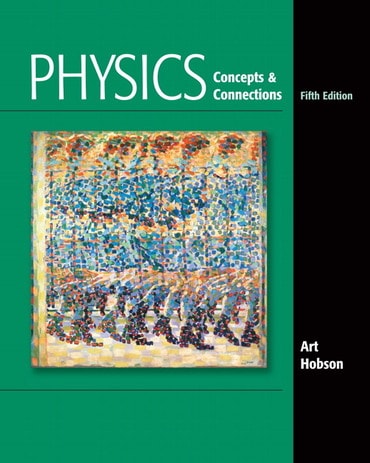
Physics: Concepts and Connections, 5th edition
Published by Pearson (December 16, 2009) © 2010
Art Hobson
Switch content of the page by the Role togglethe content would be changed according to the role
Title overview
Written for the non-science major, this text emphasizes modern physics and the scientific process—and engages students by drawing connections between physics and everyday experience. Hobson takes a conceptual approach, with an appropriate focus on quantitative skills. The Fifth Edition increases coverage of key environmental topics such as global warming and energy, and adds new topics such as momentum. Hobson’s text remains the least expensive textbook available for students taking nonmajors physics.
- Four main themes unify the text:
–the scientific process
–modern physics
–energy: its use and misuse
–the social context of physics. - Modern physics is introduced early in the text and integrated throughout.
- The “great ideas” of physics are covered in depth–versus an encyclopedic approach to all of the topics of physics.
- “How Do We Know...?” sections emphasize the process of science throughout. An interesting question is posed with a conclusion which provides scientific evidence.
- Making Estimates examples and exercises help students develop the ability to make “back of the envelope calculations”–often a goal of this course.
- Concept Checks, integrated throughout each chapter, prompt students to stop and check their understanding of key concepts. Answers are provided at the end of each chapter.
- End-of-chapter Review Questions, Conceptual Exercises, and Problems can be assigned as homework or used by students for self-study.
- Enhanced coverage of topics in global warming and environment. These topics are at the forefront of everyone’s consciousness and an intelligent awareness of their scientific foundations will give rise to better decision making in the political arena.
- New topics have been added, including the key “classic” topic, momentum.
- Topics are reorganized to chapters where they are better suited (for example, magnetism and force fields move from chapter 8 into chapter 9).
- Expanded coverage of key topics includes Coulomb’s Law, electric currents, circuits, and charges.
Pertinent information on extraterrestrial intelligence has been moved into Chapter 1. - A new interior design gives the book a modern, uncluttered look; the color green reinforces the “green” theme of the book.
Table of contents
Part 1: Prelude: Of Stars and Atoms
Ch 1: The Way of Science: Experience and Reason
Ch 2: Atoms: The Nature of Things
Part 2: The Newtonian Universe: A Clockwork Kingdom
Ch 3: How Things Move: Galileo Asks the Right Questions
Ch 4: Why Things Move as They Do
Ch 5: Newton’s Universe
Part 3: Transition to the New Physics
Ch 6: Conservation of Energy: You Can’t Get Ahead
Ch 7: Second Law of Thermodynamics: and you Can’t Even Break Even
Ch 8: Light and Electromagnetism
Ch 9: Electromagnetism Radiation and Global Climate Change
Part 4: The Post-Newtonian Universe: The Observer Intrudes
Ch 10: The Special Theory of Relativity
Ch 11: The General Theory of Relativity and the New Cosmology
Ch 12: The Quantum Idea
Ch 13: The Quantum Universe
Part 5: Within the Atom: Fire of the Nucleus, Fire of the Sun
Ch 14: The Nucleus and Radioactivity: An New Force
Ch 15: Fusion and Fission: and a New Energy
Ch 16: The Energy Challenge
Ch 17: Quantum Fields: Relativity Meets the Quantum
Ch 1: The Way of Science: Experience and Reason
Ch 2: Atoms: The Nature of Things
Part 2: The Newtonian Universe: A Clockwork Kingdom
Ch 3: How Things Move: Galileo Asks the Right Questions
Ch 4: Why Things Move as They Do
Ch 5: Newton’s Universe
Part 3: Transition to the New Physics
Ch 6: Conservation of Energy: You Can’t Get Ahead
Ch 7: Second Law of Thermodynamics: and you Can’t Even Break Even
Ch 8: Light and Electromagnetism
Ch 9: Electromagnetism Radiation and Global Climate Change
Part 4: The Post-Newtonian Universe: The Observer Intrudes
Ch 10: The Special Theory of Relativity
Ch 11: The General Theory of Relativity and the New Cosmology
Ch 12: The Quantum Idea
Ch 13: The Quantum Universe
Part 5: Within the Atom: Fire of the Nucleus, Fire of the Sun
Ch 14: The Nucleus and Radioactivity: An New Force
Ch 15: Fusion and Fission: and a New Energy
Ch 16: The Energy Challenge
Ch 17: Quantum Fields: Relativity Meets the Quantum
